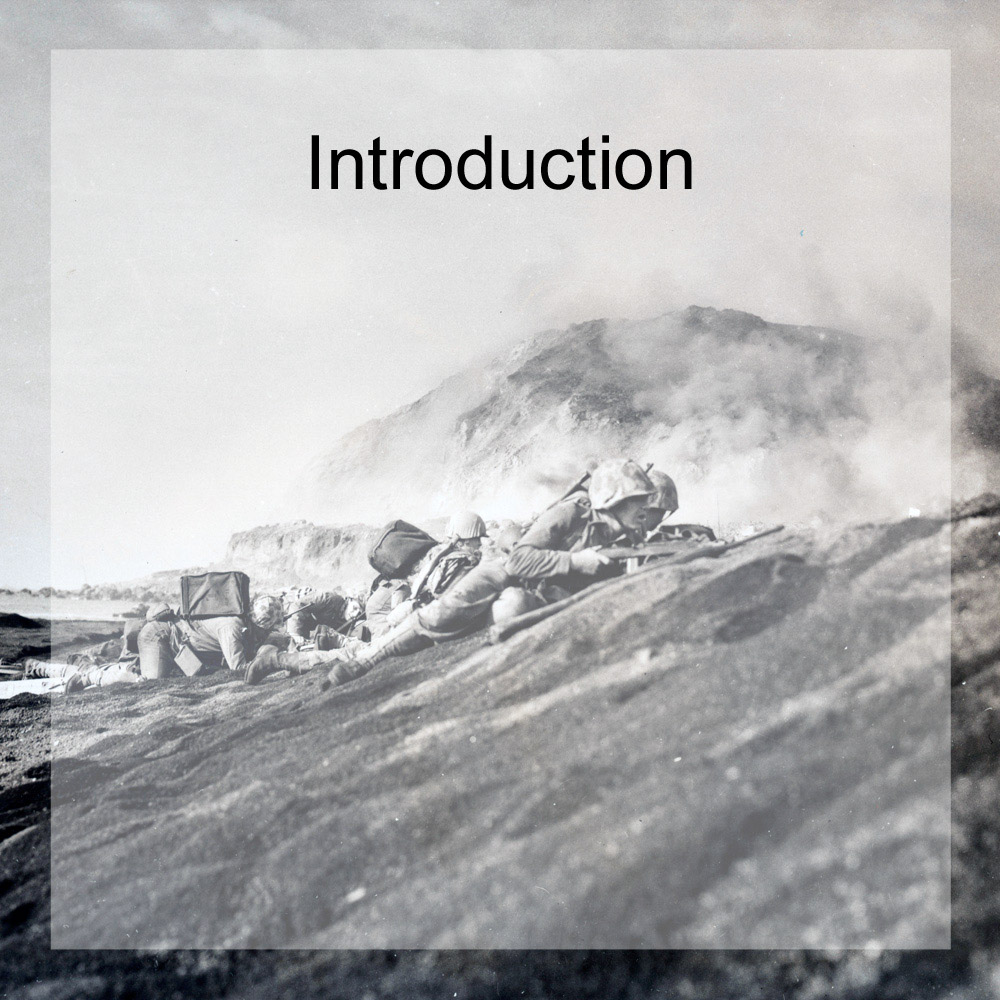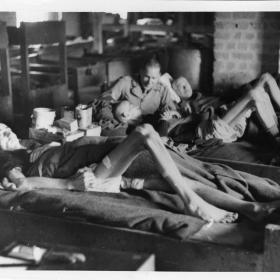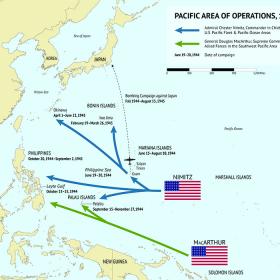The Allied Race to Victory
The Air, Land, and Sea Campaigns that Ended WWII
Following the Japanese attack on Pearl Harbor and America’s entry into World War II, American efforts in the Pacific were focused on repelling Japanese forces from further expansion in the region. Through major naval engagements with the Imperial Japanese Navy at Coral Sea and Midway, the U.S. Navy halted the Japanese advance in the South Pacific while inflicting severe losses on the Japanese fleet.
By 1944 Allied forces had made significant progress in pushing the Japanese out of the South Pacific, and with Allied success in Europe, American leaders began shifting resources towards the war in the Pacific. Offensive operations proceeded on a two-prong approach with forces under General Douglas MacArthur in the southwest Pacific preparing to retake the Philippines, while forces under Admiral Chester Nimitz began an island-hopping campaign in the central Pacific.
The first major success for American forces in 1944 was the seizure of the Mariana Islands of Saipan, Guam, and Tinian in July and August. The victories provided Army Air Forces with needed airfields from which they could strike mainland Japan. The corresponding naval battle of the Philippine Sea resulted in the destruction of nearly the entire carrier-based aircraft fleet of the Imperial Japanese Navy, allowing American bombers to begin their campaign against mainland Japan.
In September of 1944, the US began the assault to retake the Philippines. The island nation was lost in 1942 when the Japanese defeated a joint force of Americans and Filipinos, forcing General MacArthur to flee the island with a promise to return. The campaign to retake the Philippines would be the largest campaign against the Japanese in the Pacific, beginning with soldiers and marines landing at Peleliu in September. Following their success, soldiers advanced on the Philippine island of Leyte in October, landing on the largest island of Luzon in January.
As MacArthur’s forces fought an entrenched enemy in the Philippines, marines under Admiral Nimitz assaulted the island of Iwo Jima in February and Okinawa in April of 1945. Securing these islands set the stage for a planned Allied assault on the Japanese mainland in the fall.American B-29 bombers of the 20th Air Force undertook a strategic bombing campaign against Japanese cities throughout the spring and summer of 1945. Targeting aircraft manufacturing, war industry, and shipping, the bombing sought to weaken Japanese military production. In its wake the bombing destroyed vast segments of the country, resulting in hundreds of thousands of casualties, and millions of displaced civilians. The attacks continued throughout the remainder of the war, culminating in the use of the atomic bombs against Hiroshima and Nagasaki in August 1945.
The combined air, land, and naval operations of Allied forces in the final year of the war were able to strip the Japanese hold in the Pacific and succeeded in forcing the Japanese leaders to surrender. Through the determination of American forces to counter overwhelming Japanese defenses and isolate their military from needed resources, the Allies were able to bring the war to the Japanese homeland, and ultimately its end.


